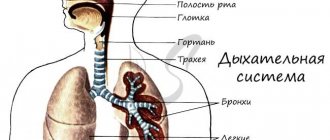Our voice is our main communication tool. Thanks to it, we convey the necessary information to others, we can express our own opinion on a particular issue. For some, the voice has become an integral part of the profession and a means of earning money (for example, for singers or announcers).
But our voice is not always resonant and loud. Like any other human organ or system, our vocal apparatus can malfunction.
The condition when the voice shrinks and becomes hoarse is called dysphonia in medicine. Temporary loss of voice is called aphonia.
A missing or dry voice becomes a real problem for a person, especially if he is a representative of the speech profession.
Make an appointment right now!
Call us by phone or use the feedback form
Sign up
Why do such problems arise? What treatment will quickly and effectively eliminate them? What preventative measures will help avoid the occurrence of aphonia in the future? You will find answers to these and other questions in our new article.
How does a voice arise?
To understand why voice problems arise, you need to understand the mechanism of its formation. The vocal cords located in the larynx play a major role in the production of voice. They consist of muscle and connective tissue. There is a distance between the ligaments - the glottis. When a person is silent, this gap is wide open; when we speak or shout, it narrows. Sound is produced when air from the lungs passes through the glottis, causing vibrations and oscillations of the vocal cords. In this case, the ligaments must be stretched and closed when air passes through them.
It is logical that if a person’s voice shrinks or disappears, then for some reason the vocal cords are not adjacent to each other. At this moment, a person can only whisper: whispering occurs when the air flow rubs against the walls of the larynx.
Most often, problems with the vocal cords are associated with infectious diseases of the upper respiratory tract, but you will be surprised that throat diseases are just the tip of the iceberg.
There are many more real causes of inflammation of the vocal cords, and they are not always associated with the ENT organs.
Voice apparatus device
The process of singing is the ability to transform air vibrations into sound. The vocal apparatus consists of the diaphragm, ligaments, larynx, throat itself, oral cavity, tongue and palate.
Stages of sound emergence and its transformation into singing:
- Due to inhalation, the lungs inflate.
- When you exhale, the ribs narrow and the diaphragm pushes air out of the lungs.
- Air rises to the throat, the ligaments begin to vibrate and close.
- The sound spreads throughout the body and then enters the resonators.
- Sound is transformed into words through lips, tongue and diction. It is the concentration of air flow in the nose and throat that creates singing.
Causes of inflammation of the vocal cords
- Infectious diseases of the ENT organs. This is the most common cause of inflammation of the vocal cords. Pharyngitis, tonsillitis, flu, bronchitis, whooping cough, measles, etc. often complicated by damaged vocal cords. That is, in these cases, voice problems are more likely a consequence (symptom), rather than the main disease.
- Laryngitis. The disease is an inflammation of the larynx, affecting the vocal cords. With laryngitis, they noticeably thicken, become flabby, and cannot fully close. Acute laryngitis is most often caused by a viral infection, and less often by bacteria and fungi. In addition to dysphonia, the patient complains of symptoms such as attacks of dry cough, itching in the throat, and a feeling of a lump in the throat. If the inflammatory process in the larynx has become chronic, we talk about chronic laryngitis. This form of the disease can lead to pathological changes in the vocal cords. Chronic laryngitis can occur in three forms - catarrhal, hyperplastic and atrophic. With the catarrhal form, as a rule, symptoms such as dysphonia (hoarseness, hoarseness, change in voice timbre), dry cough during the day, and sputum production in the morning are observed. The hyperplastic form is most often diagnosed in representatives of speech professions, who, due to the nature of their activities, often overstrain their vocal cords. At the same time, they thicken, and small growths form on them - the so-called “singing nodules”. In the atrophic form, thinning of the mucous membranes occurs, which is manifested by persistent cough, discomfort in the throat and loss of voice.
- Hypothermia. Voice problems can occur when the throat is directly exposed to cold temperatures, such as breathing in freezing cold air or drinking ice-cold drinks.
- Overstrain of the vocal cords. Increased stress on the vocal apparatus is experienced by those people who have to speak or sing for a long time and a lot due to the nature of their work. These are singers, announcers, teachers, lecturers, guides, call center operators, etc. In this case, the voice is their working instrument, so quick and high-quality treatment of the vocal cords is a priority issue for them.
- Strong and loud scream. If you scream loudly and heart-rendingly, speak in a raised voice for some time, or sing along with a performer during a concert, you can “break” your voice. And you don’t need to be a professional singer to overstrain your ligaments. By the way, not only representatives of speech professions overexert their voices. If a person works in a factory where equipment is noisy all day long, he has to “shout over” the noise in order to talk to his co-worker. Spend a full working day like this, and hoarseness will certainly appear in the morning.
- Exposure to the mucous membranes of the larynx of chemicals, vapors and compounds. Workers in hazardous industries are susceptible to this impact. Therefore, it is imperative to wear personal protective equipment while working.
- Thermal burns. Sometimes hastily eaten hot food can lead to a burn of the larynx and, accordingly, the appearance of a hoarse voice.
- Chronic diseases of the ENT organs. The presence of a constant source of infection in the body can provoke the spread of infection to the mucous membrane of the larynx, thereby causing its inflammation.
- Allergic reactions. Upon contact with an allergen, the body responds, which is called an allergic reaction. It may manifest itself as swelling of the larynx and the appearance of hoarseness or hoarseness. In especially severe cases, Quincke's edema may occur - severe swelling of the larynx, when the lower respiratory tract is completely blocked, and in the absence of emergency help and treatment, a simple allergy can be fatal. The most common allergens are house dust, pet hair, pollen, medications, seafood, citrus fruits, chocolate and other foods. This item also includes prolonged stay in dusty rooms with polluted air. If you work in such unfavorable conditions, you need to take care of personal protective equipment, such as a respirator mask.
- Neoplasms of the larynx. These can be papillomas, cysts, granulomas, song nodules, cancer, etc. You can suspect the presence of neoplasms if suddenly, for no apparent reason or the presence of other symptoms, your voice begins to disappear or deepen.
- Neurological disorders. Problems with the nervous system can negatively affect any organ, including the larynx. Therefore, some neurological disorders, stress or nervous strain sometimes lead to temporary loss of voice.
- Smoking. Nicotine and other harmful substances contained in cigarettes negatively affect the mucous membrane of the larynx. With frequent and prolonged smoking, the voice acquires a characteristic hoarseness and becomes rough. Very often, such changes in voice become irreversible. The only remedy for treating voice in this case is to stop as early as possible and quit the bad habit.
The presence of so many causes of voice problems makes it very difficult to make an independent diagnosis. For example, it is impossible to determine whether you have tumors in the larynx. Therefore, if hoarseness, hoarseness or loss of voice occurs, it is imperative to consult with an otolaryngologist. Further tactics for treating the disease will be clear after a direct examination and the correct diagnosis.
Friends! Timely and correct treatment will ensure you a speedy recovery!
Features of the physiology of the vocal apparatus
The singer’s physiology and vocal cords are links in the same chain.
To learn to sing correctly, a person must unlearn to pay attention to vibrations in the throat, despite the fact that it is on the vocal cords that sound is born. The cords are the main element of the vocal apparatus. Their work determines what sound will come from: quiet or ringing, melodic or rough, rolling or compressed. The voice is a wave that is generated by the cords. It appears due to air pressure on the body when a person takes a breath. Vibrations are generated, the combination of which produces sound, and for singers these vibrations are so frequent and strong that the effect of singing is created. It turns out that “singing” is not a stream of melodic voice, but shaking the air and creating sound vibrations.
The effort with which a person creates vibrations determines their direction, which determines the flow that reproduces one of the many shades of singing. There will be no strength in the sound, if you do not send the voice forward, it will quickly fade away and dissolve in space.
The ligaments allow you to control the vocal flow because they have the ability to stretch and change shape. If a person sings loudly and high, then they become thin and long, if low, then they become dense and short. The closure of the ligaments is the final process when the sound leaves the throat. The mechanism can be studied and controlled, which is the task of an experienced teacher.
Symptoms
Most often, pain in the vocal cords is detected in the morning. But it is extremely rare that hoarseness or loss of voice is asymptomatic. In addition to voice problems, depending on the final diagnosis or condition that caused the damage to the ligaments, a person may experience the following symptoms:
- sore and dry throat;
- a sore throat;
- cough;
- hoarseness;
- itching in the larynx;
- itching in the eyes;
- nasal discharge;
- elevated body temperature.
The appearance of at least one of these signs in combination with loss of voice or hoarseness is already enough to make an appointment with an ENT doctor to prescribe effective treatment. When treating a disease, the doctor relies primarily on the results of examining the patient and determining the cause of the pathology.
Once the cause of problems with the vocal apparatus has been established, treatment of the throat can begin.
Speech apparatus and defects
The degree of development of the speech apparatus determines the quality of pronunciation of sounds. Diseases of any of the departments are manifested by a deterioration in sound pronunciation and change the characteristics of a person’s voice. The task of speech therapists and doctors when identifying phoniatric symptoms is to identify the causes of their occurrence and select methods to eliminate the defects.
Due to the complexity of the structure of the speech apparatus, there are many possible causes of impaired sound pronunciation. Diagnostic measures should always be comprehensive and selected individually for each person. There are several reasons for the development of speech defects, which occur most often:
- organic disturbances in the structure of individual structures;
- their functional immaturity, which causes incorrect movements during the conversation;
- neurological disorders in those parts of the central and peripheral nervous system that are involved in the formation and formation of sounds.
With these defects, a person often notices problems with breathing, swallowing food and liquids. Such symptoms gradually lead to a decrease in the level of quality of life and can cause impaired adaptation in society, depression and other negative consequences. If you have delayed speech development or other defects, you should always seek professional help from doctors or a speech therapist. Specialists will conduct the necessary examinations and select corrective measures to eliminate the organic or functional defect.
The human vocal apparatus has a complex structure and consists of three main parts: respiratory, vocal and articulatory, or sound-pronouncing. All structural departments act in concert, determining not only a person’s voice, but also the formation and pronunciation of all sounds and words. The regulation of the speech process is carried out by the central nervous system, namely the cerebral cortex, subcortical extrapyramidal systems and the nuclei of the cranial nerves. Knowledge of anatomy allows you to promptly identify changes in the speech organs, primarily located in the oral cavity.
How to treat vocal cords?
Traditionally, inflammation of the pharynx and larynx is treated by an ENT doctor. If dysphonia is associated with an infectious disease, the treatment regimen may include taking antibiotics, antiviral or antifungal drugs, anti-inflammatory and antiseptic agents, lozenges and lozenges for coughs and sore throats, gargling, inhalations and a course of physiotherapeutic treatment. An ENT doctor will also help if voice loss is associated with burns to the larynx or exposure to harmful substances.
A phoniatrist treats strained ligaments. After the examination, the patient will be prescribed a treatment regimen, which, in addition to traditional treatment methods, includes special exercises so that the problem does not recur in the future.
If dysphonia is a consequence of an allergic reaction of the body to an irritant, treatment should be carried out under the supervision of an allergist. Neurological disorders and the consequences of stress are treated by a neurologist and a psychotherapist. If laryngeal tumors were discovered during the examination, further treatment must be continued with an oncologist.
Thus, treatment tactics will depend solely on the cause of dysphonia or aphonia!
Prevention
In many ways, the appearance of dysphonia is a signal that somewhere they haven’t looked after something and haven’t taken care of their health. To avoid having to subsequently be treated by an ENT doctor:
- treat infectious diseases in a timely manner;
- do not get too cold, do not breathe through your mouth in the cold and do not drink ice-cold drinks;
- do not shout, do not speak in a raised voice;
- take breaks if you have to talk a lot and for a long time;
- do special exercises recommended by phoniatrists to avoid strain on the vocal apparatus;
- avoid contact with allergens;
- wear masks if you work in unfavorable conditions;
- stop smoking.
If a problem does arise, do not engage in self-diagnosis or self-medication: a timely visit to an ENT doctor will help avoid complications and speed up the recovery process.
At the ENT Clinic of Doctor Zaitsev, consultations are conducted by highly qualified ENT doctors and phoniatrists with extensive practical experience. When the first signs of voice problems appear, please call the following numbers: +7 (926) 384-40-04 and come!
We will be happy to help you!










